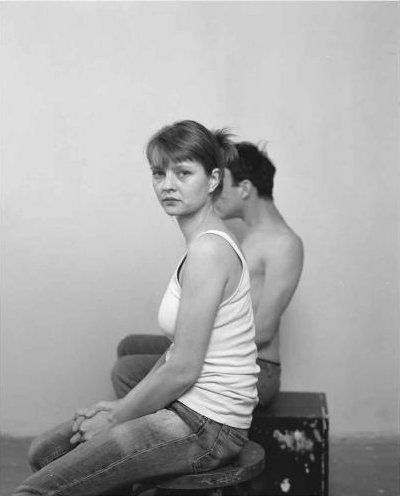moss grows in shadow

guest: stanislava karbušická
project: jiří thyn
you wont feel like you are in a forest. although moss grows in shadow. there
will be dwarfs, anyway. little ones, a little funny a little malicious. they
will crouch in an empty white room. they will play hide-and-seek behind the
kitchen furniture. there will be boards, there will be a clock. as if you
find yourselves amongst the lemures in the zoo. it will be minimalistic. it
will be surrealistic. it will be dry. but at the end there will grow a
toadstool in the middle.
jiri kovanda belongs to the second generation of czech "actionism", which
appeared on the art scene in the late 1970s. the west discovered him through
his minimalist actions and "action-interventions" that may signify protocols
of a general record. they are significantly different from older czech
fluxus, which was oriented to pedagogy and utopy, and from those of his
contemporaries, whose works reflected mainly the physical and the
existential. kovanda s minimalist actions and interventions of the 1970s,
were so refined, that they appeared almost imperceptible. they mostly had an
effect throughout time. certain romanticism and personal aspect is
characteristic for his work, which was quite refreshing in the depressing
1970s, and it opposed the trauma of politically – laden performances.
the photographic work of jiří thýn is characteristic by a reflexive
conception of this medium. put in paraphrasis – they are " photographs,
that reflect their own reflection." the author s strategy of reflexivity is
a conceptualization of the technological frame. there are technical practises
input into the picture( expositional stripe test, coloured matrixes of the
photograms), that are aesthetically put on an equal footing with
"classical" photographic image. thýn s attitude makes polemic with
understanding of the picture as a frozen reflection of the reality. it makes
it difficult for the spectator to read it simplistically as an objective
reflection of reality and it draws attention to the medium itself, inside of
the picture as well as on its installation on the exhibition. the equal part
of his presentation are also installations, objects, or projections.
